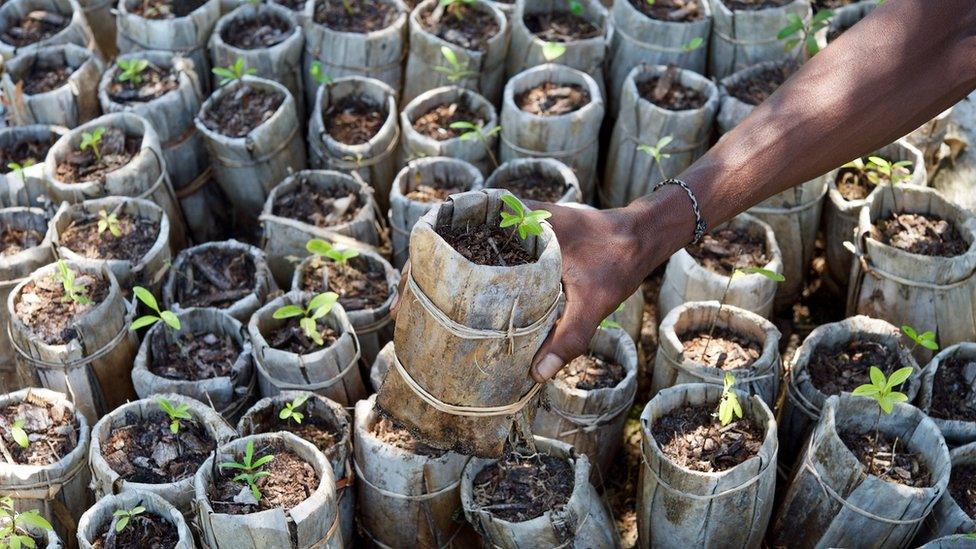Forests: The experts' guide to bringing back forests
- Published
- comments

Poorly planned tree planting schemes can actually be more harmful to the environment, experts are warning.
A lot of us would probably assume that planting more trees is the answer to deforestation.
However scientists from the Royal Botanic Gardens at Kew say reforestation isn't as simple as planting millions of trees as fast as possible.
Don't worry though, they have broken it down into ten golden rules for helping to rebuild forests around the world.
The rules aim to help forests maximise carbon capture, which helps reduce the effects of global warming, supports recovering ecosystems, and benefits people's livelihoods.
What is the problem with planting lots of trees?
Large-scale tree planting schemes can actually be harmful to the environment if they are not carried out properly, say the experts at Kew.
Dr Kate Hardwick, the scheme's Conservation Partnership Coordinator said: "When people plant the wrong trees in the wrong place, it can cause considerably more damage than benefits, failing to help people or nature."
Here is an area of Thailand that has been successfully restored.
What are the 10 golden rules for restoring forests?
1. Protect existing forests first - it is more important to look after the forests we do have before we plant acres of new forests.
2. Put local people at the heart of tree-planting projects. The projects are much more likely to work if local communities are involved from the start of a project because people feel a sense of pride if they have helped.
3. Maximise biodiversity recovery to meet multiple goals - other outcomes such as encouraging species conservation, improved living conditions for communities, food growth and better quality soil and water should also be considered.
4. Select the right area for reforestation - rather than planting new forests in areas that are already doing good work for the environment, consider using areas that have been degraded (places that used to be forests but have been destroyed in the past).
5. Use natural forest regrowth wherever possible - rather than actively planting trees, which can be expensive, try to protect the areas that have been degraded so they grow back naturally.
6. Select the right tree species that can maximise biodiversity. When natural growth is not possible and tree planting is required, picking the right trees is crucial say the scientists. Using a mix of species, it can encourage a much richer ecosystem.
7. Make sure the trees are resilient to adapt to a changing climate - using seeds that are suitable for the local climate or the possible projected climate is sensible.
8. Plan ahead - think about what the seeds or trees will need in order to keep on thriving in the future.
9. Learn by doing - use the knowledge of the forests that local people have gained over the generations of living nearby.
10. Make it pay - make sure the money made by replanting the forests is more than the profit of the land being used as something else such as farm land.
- Published27 May 2023
- Published5 August 2020
- Published1 December 2019
